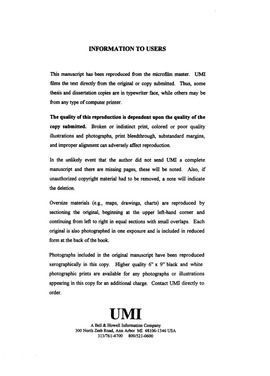| dc.contributor.advisor | White, Robert L., | en_US |
| dc.contributor.author | Lin, Rong. | en_US |
| dc.date.accessioned | 2013-08-16T12:29:37Z | |
| dc.date.available | 2013-08-16T12:29:37Z | |
| dc.date.issued | 1997 | en_US |
| dc.identifier.uri | https://hdl.handle.net/11244/5475 | |
| dc.description.abstract | The catalytic cracking mechanisms of poly(ethylene) and poly(styrene) differ considerably from their thermal cracking mechanisms. In the case of poly(ethylene), thermal cracking leads to the formation of a wide range of hydrocarbon products. As a result, recycling methods for poly(ethylene) based on thermal cracking are of limited use. However, the molecular weight range of poly(ethylene) volatile decomposition products obtained when silica-alumina, HZSM-5 and sulfated zirconia catalysts are present is narrower than that obtained by thermal cracking. Catalysts dramatically change the volatile products obtained by heating poly(styrene). Whereas styrene is the most abundant volatile product resulting from neat poly(styrene) thermal cracking, benzene is the most abundant product when poly(styrene) is catalytically cracked. For both poly(ethylene) and poly(styrene), catalytic cracking product distributions depend on the choice of catalyst. The thermal stabilities of poly(ethylene) and poly(styrene) also depend on their initial molecular weights. Overall volatilization activation energies for poly(ethylene) and poly(styrene) thermal decompositions are considerably reduced by the presence of cracking catalysts and the magnitude of the reduction depends directly on the catalyst acidity. A lowering of overall volatilization activation energies by cracking catalysts is desired for polymer recycling applications because it greatly reduces the cracking temperature required to decompose plastic wastes, which reduces the operational costs of the process. | en_US |
| dc.description.abstract | Communities in the United States are in dire need of alternatives to municipal solid waste landfilling. Of the solid waste components currently placed into landfills, plastics are particularly undesirable because of their limited biodegradability. This work was carried out to investigate the potential use of catalytic cracking to convert plastic wastes into mixtures of useful chemicals. The effects of silica-alumina, HZSM-5 zeolite and sulfated zirconia cracking catalysts on the thermal degradations of poly(ethylene) and poly(styrene), which constitute nearly 80% of plastic packaging in the United States, are described. | en_US |
| dc.format.extent | xviii, 224 leaves : | en_US |
| dc.subject | Catalytic cracking. | en_US |
| dc.subject | Engineering, Chemical. | en_US |
| dc.subject | Plastics Technology. | en_US |
| dc.subject | Engineering, Sanitary and Municipal. | en_US |
| dc.subject | Pyrolysis. | en_US |
| dc.subject | Styrene. | en_US |
| dc.subject | Plastic scrap. | en_US |
| dc.subject | Engineering, Environmental. | en_US |
| dc.subject | Polyethylene. | en_US |
| dc.title | Catalytic cracking of poly(ethylene) and poly(styrene) by silica-alumina, HZSM-5 zeolite and sulfated zirconia. | en_US |
| dc.type | Thesis | en_US |
| dc.thesis.degree | Ph.D. | en_US |
| dc.thesis.degreeDiscipline | Department of Chemistry and Biochemistry | en_US |
| dc.note | Adviser: Robert L. White. | en_US |
| dc.note | Source: Dissertation Abstracts International, Volume: 58-03, Section: B, page: 1406. | en_US |
| ou.identifier | (UMI)AAI9724431 | en_US |
| ou.group | College of Arts and Sciences::Department of Chemistry and Biochemistry | |
